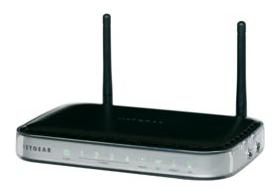| SITE MAP | Next Page - Software
downloads |
This page was originally written in the days (not so long ago) when the
normal
method
of
connecting to the Internet was by a dialup modem. The advent of
broadband
means that the term Modem now means something very different. A
Broadband
modem (router) is now normally supplied by your Internet Service
Provider (ISP)
and
they come in two main varieties - either for a BT land line type or one
for
a Cable system (e.g. Virgin Media). See
Wikipedia Instead
of
being inside the computer the Modem is connected to a computer via an
Ethernet
port (or, if the computer does not have an Ethernet connection, can
also be connected to a USB port). However, Almost all home
computers now have a wireless facility. So it is likely that you
will not need to have any cable betweeen it and the router.
All modern (PC) computers have one or more USB (Universal Serial
Bus) sockets. Universal is a goof definition as it is capable of
connecting to a router but also to a printer and many other devices
such as memory sticks.
These days the equipment supplied by your ISP will be a
Router.
 The Router's job is to sort
out
connections to several computers that use the same connection to the
'net'.
Routers have an internal wireless aerial and can be used to
connect to from
wireless
equipment, including wireless printers. The set up of these pieces of
equipment is normally taken
care
of by software within your computer. If there is a
problem
it is best to get in touch with the router's supplier.. The one popular
technique tried
if
your broadband modem/router is not making a connection is to reset it
by
disconnecting
the power cable from the back, waiting a few seconds, then replacing
that
cable. It will not harm it and it is likely that it will reset the
connection, hopefully to a better one.
The Router's job is to sort
out
connections to several computers that use the same connection to the
'net'.
Routers have an internal wireless aerial and can be used to
connect to from
wireless
equipment, including wireless printers. The set up of these pieces of
equipment is normally taken
care
of by software within your computer. If there is a
problem
it is best to get in touch with the router's supplier.. The one popular
technique tried
if
your broadband modem/router is not making a connection is to reset it
by
disconnecting
the power cable from the back, waiting a few seconds, then replacing
that
cable. It will not harm it and it is likely that it will reset the
connection, hopefully to a better one.
All modern laptops, netbooks and "Pads" or Tablets have internal
wireless
(Wi-Fi) hardware. Desktops MAY have this but can be made wireless by
the
addition of a cheap wireless USB 'dongle' pushed inbto one of its USB
sockets. Equipment, such as mobile phones
and
most tablets do not have a socket to connect by cable to a router (and
are
therefore dependent on wireless)
The rear of the router looks like this, showing the sockets to which a
number
of PCs can be attached with inexpensive Ethernet cables

If your computers are normally close together there is no need to
venture
into the mysteries of wireless and, in fact, cable connections are less
liable
to be 'hacked' (got into) from outside and are usually faster than by
wireless connection, especially if your device is a long way from the
router or there are thick walls, ceilings or metal objects in between.
WIRELESS. Setting up a wireless connection has become
easier these days. I realise
that
there are security questions but it is a pity they couldn't make it as
simple
as attaching a wireless mouse. I was always concerned that resetting
the
router attached to my desktop I might lose my internet connection
altogether.
NOT SO. The router still keeps working regardless of whether or
not the
wireless
connection is correctly set up. Poke the reset button on
the router (if you can find it) or simply disconnect the power
briefly. Wait until the lights show steadily.
| Top of Page | Next Page - Software
downloads |